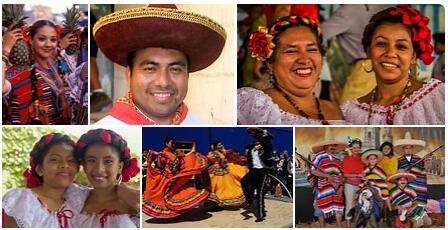The Mexican Revolution
The revolution began as a progressive bourgeois protest against the dictatorship. In the years after 1900, the authorities were unable to solve the problems created by the industrialization and capitalization of agriculture. At the 1910 presidential election, Liberal landlord Francisco Madero stood as a counter candidate for Diaz – with support from the entire opposition. However, Diaz also controlled this election, but the election campaign brought together the resistance forces. Madero organized an army in Texas and Diaz retired when his forces in May 1911 were defeated. That same year, Madero was elected president.
However, stronger forces had been unleashed. Poor farmers organized themselves, occupied land on the large estates and demanded greater rights in the new state. Two of their leaders became world famous: Pancho Villa in the north and Emiliano Zapata in central and southern Mexico. At the same time, the reactionary forces in Mexico would also not accept Madero’s liberal bourgeois policy. In 1913 they organized a conspiracy which included The United States Ambassador to the country, Henry Lane Wilson, actively participated residents They killed Madero and this triggered full civil war, which continued to a greater or lesser extent until the early 20’s.

Almost all the Mexican people were involved in the fighting, and the revolution took on a more radical and populist character. The Constitution, drafted by Venustiano Carranza in 1917 – and which remains in force – established the minimum wage, strike and organizational law. Private ownership was curtailed in relation to national interests; Among other things. in principle, all mineral resources were declared national property. Land reform and social welfare measures were also enshrined in the Constitution.
But the price of the revolution was high. A decade of fighting had caused enormous material damage to the country. About one million people out of a population of ten million died from direct violence, starvation and illness due to the civil war. The original leaders were killed: Madero in 1913, Zapata in 1919, Villa in 1923. And the promises of revolution on land, bread and justice were scarcely fulfilled.
1934-40 Lazaro Cardenas
The various revolutionary currents joined in 1929 together in the Partido Nacional Revolucionario (National Revolutionary Party), founded by President Plutarco Elías Calles. It was the predecessor of PRI. During Lazaro Cardenas’ presidency (1934-40), peasants and workers fulfilled parts of what they had fought for during the Revolutionary years. The main results were the implementation of land reform, the nationalization of the oil, the expropriation of the property of the foreign oil companies, the initiation of industrialization and the expansion of the education system.
In order to prevent speculation and division of properties by sale, land with land reform was distributed on a collective basis. A group of families were jointly granted the right to land – an ejido. Although they usually cultivated the land on an individual basis, the land of ejido could not be formally sold out or sold.
The principle of no re-election to the presidential post was enshrined in the constitution. Still, there were party members who proposed Cárdenas to change it, in view of his enormous popularity, to be re-elected, but this he flatly rejected. Since Porfirio Díaz, no Mexican president has been re-elected. Partido Nacional Revolucionario was transformed into Partido Revolucionario Institucional (PRI, the Institutionalized Revolutionary Party). It was not just a new name, but also about the abolition of PNR’s socialist principles.
According to thesciencetutor, the conditions of World War II catalyzed the first phase of Mexican industrialization, which reached a hectic phase during the presidency of Miguel Alemán (1946-1952). The changes during this period changed the prevailing social equilibrium. Mexico was still predominantly an agricultural country, but 40% of its population now lived in cities. All within the context of a demographic explosion that even the rapid economic development was unable to absorb. At the same time, the joint ownership of the land – which had probably helped to create a good revolutionary consciousness among the peasants – lost ground to new individual modes of operation that went towards the reconstruction of the large latifundies (estates).
In the following, Cárdena’s heirs – albeit not very faithful to the integrity of the revolution – managed to stabilize the factors that separated the Mexican marvel from the rest of the continent’s underdevelopment and backwardness: a strong government intervention in the economy, a high level of public investment, a balance between easy and heavy industry as well as tourism.
